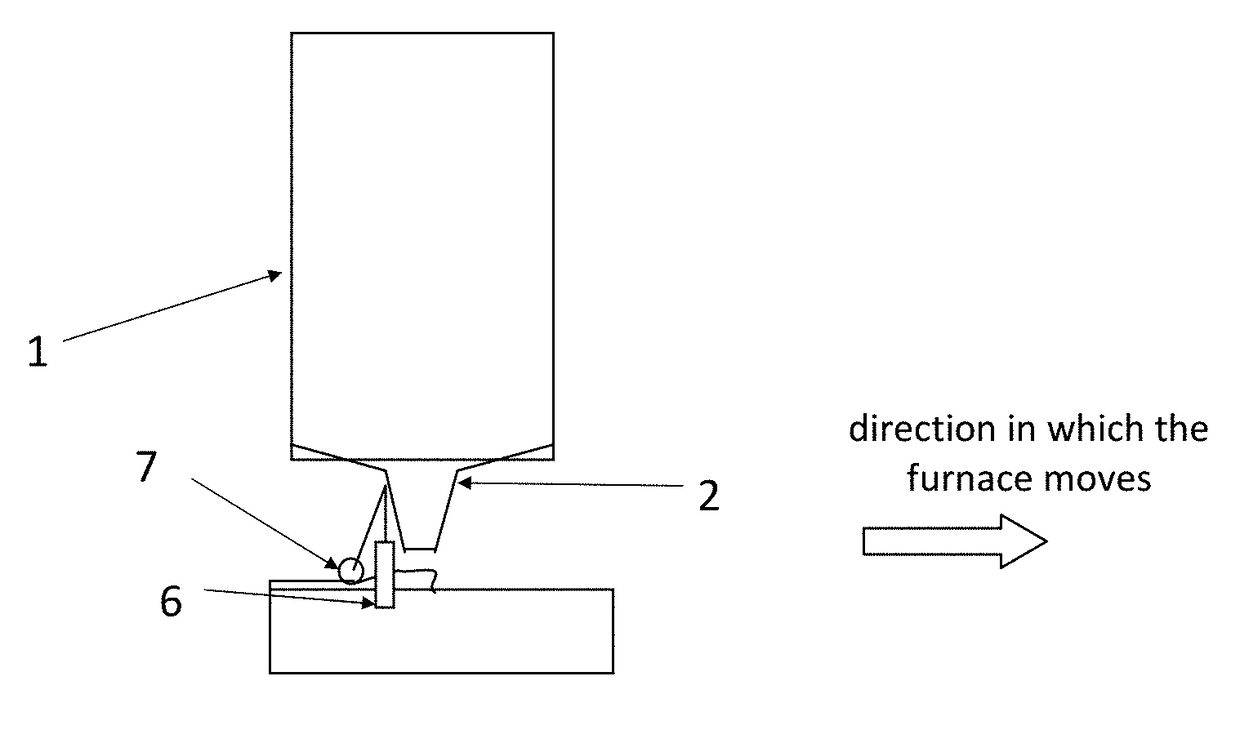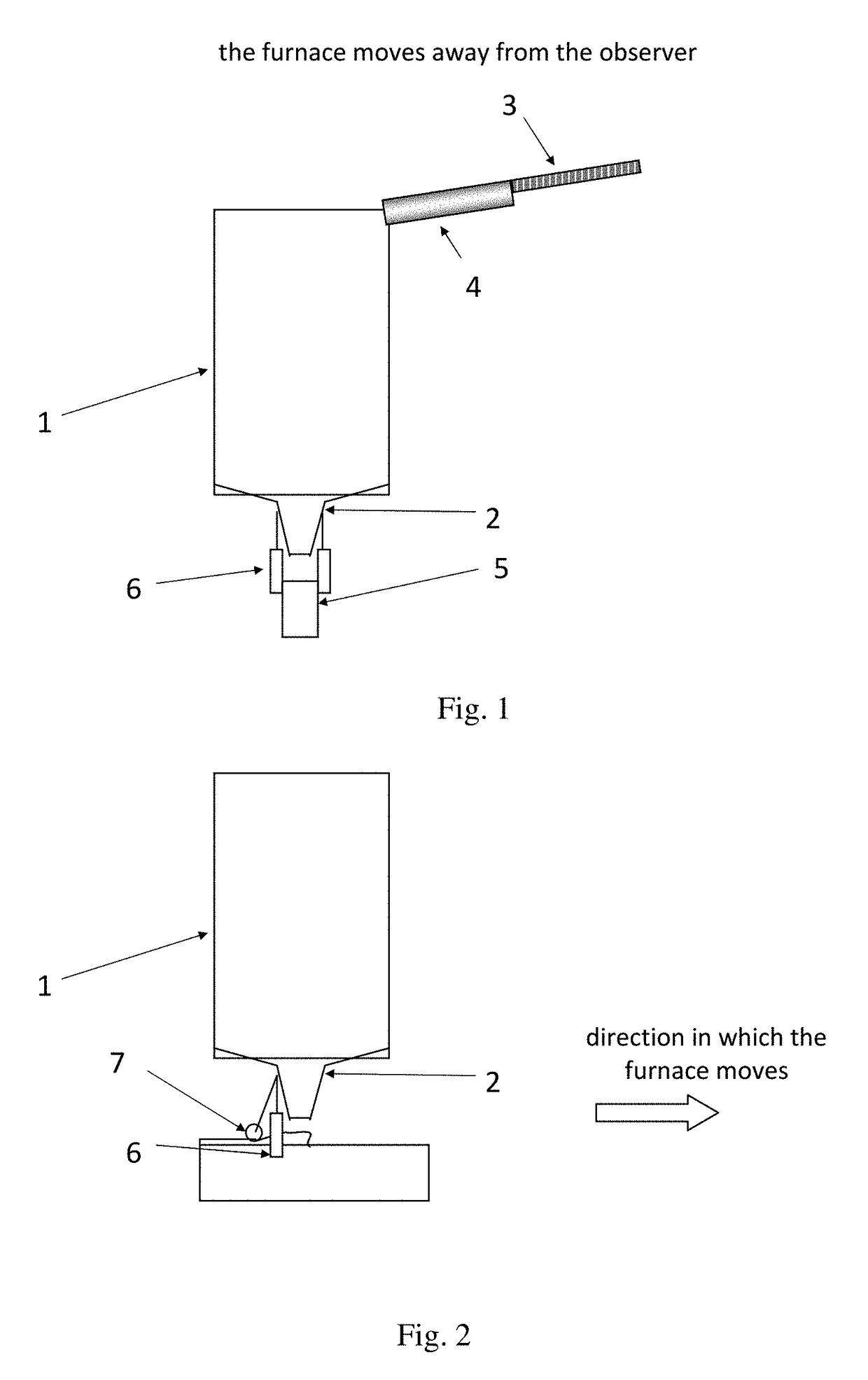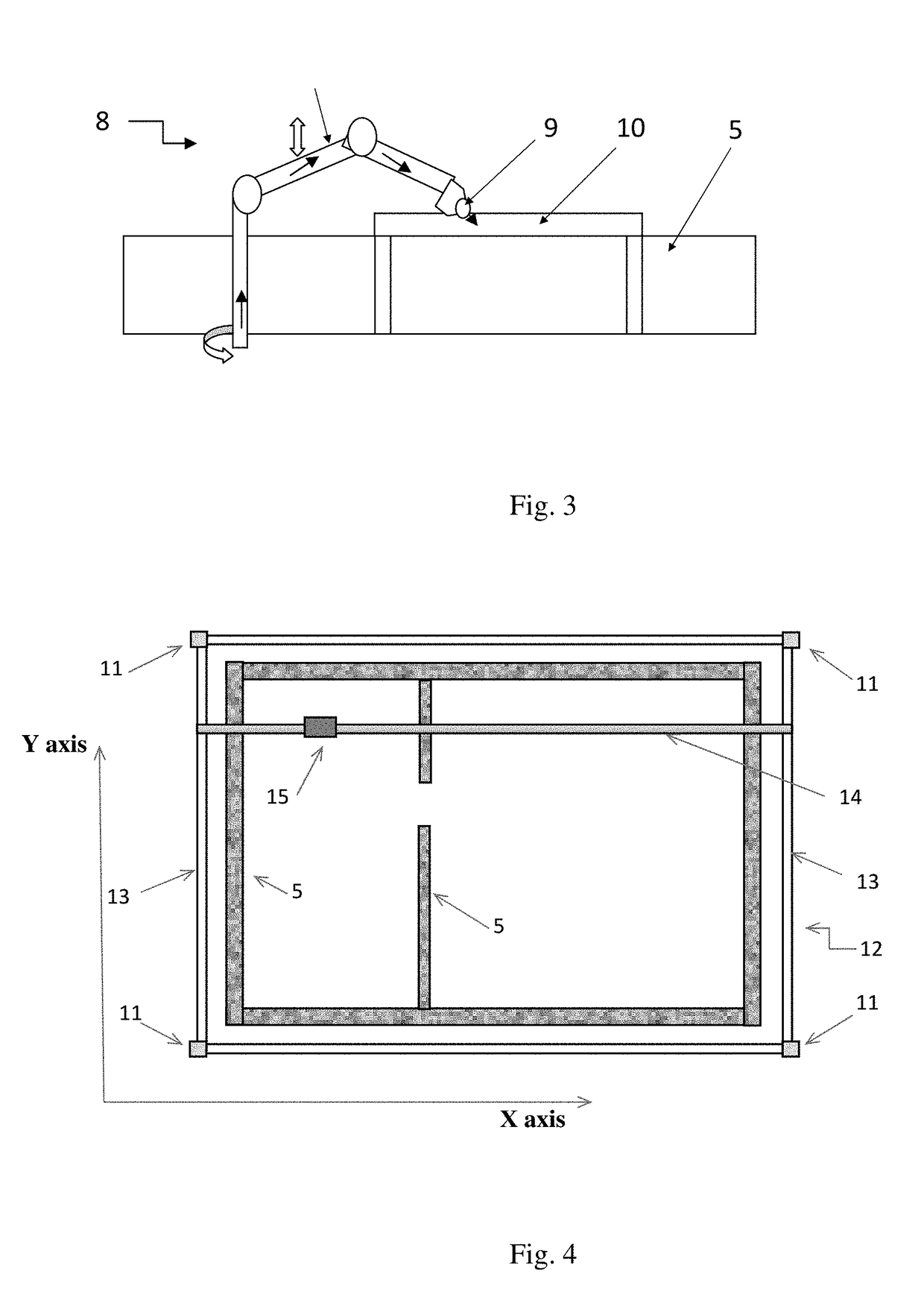Method for 3D printing of buildings and a device for implementation thereof
a 3d printing and building technology, applied in the field of construction, can solve the problems of insufficient strength of building structures, shortcoming of prior art analogs, low efficiency, etc., and achieve the effects of ensuring wear resistance and decorative function, reducing labor intensity, and reducing labor intensity
- Summary
- Abstract
- Description
- Claims
- Application Information
AI Technical Summary
Benefits of technology
Problems solved by technology
Method used
Image
Examples
first embodiment
[0020]One example of a specific implementation of the method for 3D printing of buildings using the present invention will be now more particularly described.
[0021]Three print heads are used in said example of specific implementation. Mobile glass melting furnaces 1 are the said print heads, wherein one of said furnaces is shown in FIGS. 1 and 2. The furnaces are used to melt raw material and feed the melt in a dosed manner to the planned sites of construction of building structures such as walls. Therefore, the furnaces are moved in 3D space using a 3D positioning mechanism along the trajectories corresponding to the arrangement of walls 5 of the building under control of a computer program, same as in a 3D printer. Thereupon, the process of fabrication of structures for buildings is referred to as printing. In terms of physics, the process of feeding melt is known as casting; therefore, we will subsequently use the term “casting” to describe feeding of the melt.
[0022]The density o...
second embodiment
[0028]For the present method, the technical result is accomplished due to alignment of the non-hardened material in the building structure and due to the installation of some additional structural elements that cannot be printed when casting the entire structure of the building. Aligning the material before it melts ensures accuracy in dimensions of the building structure, thereby enhancing strength and stability of the building. The alignment procedure is unavoidable when printing structures of the buildings made of melted silicates. Such materials are characterized by high strength required for 3D printing of multi-story buildings, while simultaneously having high melting point and low hardening rate, which makes alignment of a printed structure necessary. Installation of additional elements is needed during 3D printing of multi-story buildings. Such elements as beams for window and door openings made of steel or reinforced concrete allow one to considerably enhance floor strength...
PUM
| Property | Measurement | Unit |
|---|---|---|
| density | aaaaa | aaaaa |
| density | aaaaa | aaaaa |
| density | aaaaa | aaaaa |
Abstract
Description
Claims
Application Information
 Login to View More
Login to View More - R&D
- Intellectual Property
- Life Sciences
- Materials
- Tech Scout
- Unparalleled Data Quality
- Higher Quality Content
- 60% Fewer Hallucinations
Browse by: Latest US Patents, China's latest patents, Technical Efficacy Thesaurus, Application Domain, Technology Topic, Popular Technical Reports.
© 2025 PatSnap. All rights reserved.Legal|Privacy policy|Modern Slavery Act Transparency Statement|Sitemap|About US| Contact US: help@patsnap.com



